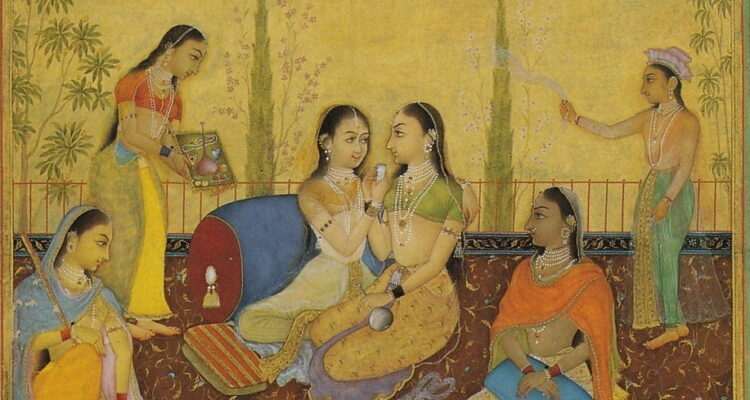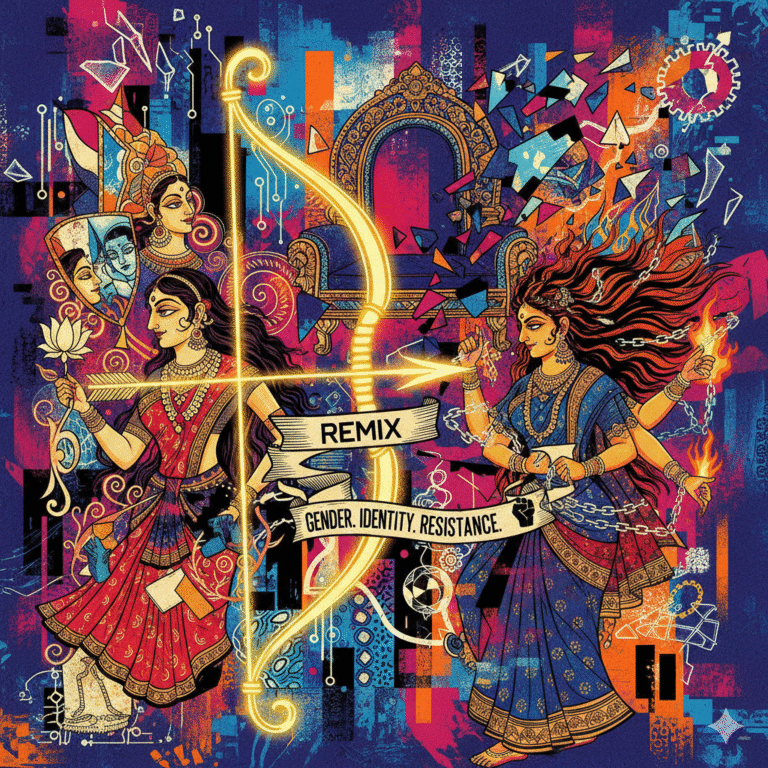If gender is a social construct, then its impact is not only limited to enforcing behavioural norms but extends to power dynamics, politics of gender and forming patriarchal boundaries (in this case actual physical boundaries). The term “Zenana” originates from Persian, meaning “of the women” or “pertaining to women.” Women occupants themselves are euphemistically referred to as “Zenana”.
The Zenana System was formed to keep the women of the family segregated to a portion of the house. Men and women were supposed to be engrossed in their daily activities in separate spaces. The system essentially originated from the “Purdah System” and gained popularity with the spread of Muslim rule in the 13th century in India. Influenced by the Zenana practice, the Hindu families too took up the practice and the space pertaining to women came to be known as andarmahal/antapur.

Why the Seclusion?
The idea of seclusion was rooted in the belief that the honour of a woman lies in being physically hidden from the eyes of other men. Being in seclusion was a way to protect her from external influences and raiders, prevalent at that time. Therefore, women of noble families were told to be confined to the inner quarters of their homes, away from the eyes of the world.

The Rise of the Zenana Education System
The concept of “Zenana Education” for women in India emerged in the mind of Scottish missionary Alexander Duff (1805-1878). Arriving in India in 1830, Duff initiated various programs promoting Western education He believed that Hindu society would be more receptive to education for women if delivered by other women.
Seeking expert opinions, Duff consulted Mrs Wilson and Krishnamohon Banerjee, both prominent figures in the female education movement. Both encouraged him to pursue Zenana Education despite societal restrictions.
Inspired by their support, Duff actively promoted “Zenana Education” through articles in various newspapers and periodicals. His efforts garnered growing interest among influential figures, paving the way for a new chapter in women’s education in India.

The British Women’s Perspective on Zenana Education
The second half of the 19th century witnessed an increase in activities intended to educate women. This was the time, when the British white women had a chance to enter the sacred Zenana premises and educate the women who had no other way of interacting with the outer world. Historians believe that the self-image of the Englishwomen was reinforced in the process when they compared themselves to the downtrodden Zenana women.
“Their helplessness appeals to the heart, in somewhat the same way
in which the helplessness and suffering of a dumb animal under the
knife of the vivisector. Somewhere, halfway between the Martyr
Saints and the tortured ‘friend of man’, the noble dog, stand,… those
pitiful Indian women.”
- Josephine Butler, who came to India in the last decades of the 19th century,
Encounters in the zenana: Representations of Indian women in 19™ century travelogues of Englishwomen by Sujata Bhattacharya
However, there exist other views that gazed at these women as not silent victims but intelligent with enormous positive energies, thereby providing an alternate view on how Englishwomen perceived Zenana women.
The Cosmopolitan Ambience Inside the Zenana
Inside these separate spaces, women from different caste, religion, background and ethnicity came together and the intermingling exposed them to a world that was previously unknown to them. These women brought the cultural identities of their parental homes, bridging the worlds of different languages, religious practices, food habits, recipes and values.
Within the confines of their homes, women formed networks of solidarity, shared knowledge, and exercised influence over familial and social matters. Through acts of subversion, such as poetry, music, and storytelling, women challenged prevailing norms and carved out spaces of autonomy and self-expression.
Involvement of the Zenana Women in Politics
Despite the physical boundary and segregation, the Zenana women participated in the matters of the state. They brought great intellectual perspectives to the forefront.
“During the colonial period, purdah women arranged marriages of alliance for their children and were amongst the first Indian women to travel abroad to Europe, America, and Asia at a time when few Indians did so.”
- ‘Home and the World: Cosmopolitan, transnational identities of courtly Indian women in the late imperial zenana by Angma D Jhal
In conclusion, the Zenana stands as a symbol of the complexities of gender relations throughout history. From the past to the present day, the practice of secluding women within domestic spaces has been a pervasive feature of many cultures, reflecting deeply ingrained beliefs about gender roles.
References:
‘Home and the World,: Cosmopolitan, transnational identities of courtly Indian women in the late imperial zenana by Angma D Jhala
Encounters in the Zenana: Representations of Indian women in 19™ century travelogues of Englishwomen by Sujata Bhattacharya
Bengali Muslim women in “zenana” education system: A Historical study in the British Period










+ There are no comments
Add yours